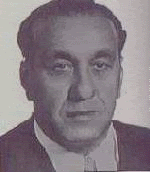 |
| The Rise and Fall of a Casino Mobster |
What distinguishes this book is its unapologetic tone. Cullotta, without reservation, lays bare the brutality and treachery inherent in the criminal underworld. The narrative is punctuated with anecdotes, personal reflections, and a palpable sense of remorse, providing readers with a multifaceted understanding of the choices made in the pursuit of power and wealth.
One of the book's notable strengths lies in its unflinching portrayal of the violence and ruthlessness of organized crime. Cullotta doesn't romanticize the mob lifestyle; instead, he underscores its grim reality. The visceral accounts of criminal exploits, orchestrated hits, and power struggles create a gritty and authentic atmosphere, immersing the reader in the high-stakes world of the Chicago Outfit.
The collaboration between Cullotta and Griffin seamlessly weaves together the broader historical context of organized crime in Chicago and Las Vegas with the personal narratives of Spilotro and Cullotta. This dual perspective enriches the narrative, offering a comprehensive understanding of the characters and the sociopolitical landscape that shaped their destinies.
Tony Spilotro emerges as a complex and enigmatic figure in the book. From his early days as a proficient enforcer to his pivotal role in overseeing the mob's operations in Las Vegas, the authors delve into the intricacies of his character. The narrative explores his relationships, alliances, and the factors that ultimately contributed to his downfall. Spilotro is portrayed not just as a ruthless criminal but as a man with strengths, weaknesses, and a magnetic charisma that left an indelible mark on those around him.
Cullotta's storytelling prowess is evident throughout the book. His first-hand accounts of criminal activities and the inner workings of the mob create an aura of authenticity. The narrative strikes a delicate balance, seamlessly alternating between action-packed sequences that propel the plot forward and reflective moments that humanize the characters, allowing readers to connect with their struggles and vulnerabilities.
While the book provides a gripping and immersive narrative, it also prompts ethical contemplation. By presenting the story without explicit moral judgments, the authors allow readers to form their own opinions about the characters and the consequences of their choices. This approach adds layers of complexity to the narrative, challenging readers to grapple with the ethical implications of the criminal lifestyle depicted.
In conclusion, "The Rise and Fall of a 'Casino' Mobster" stands as a compelling and authentic exploration of Tony Spilotro's life and the intricacies of organized crime. Frank Cullotta's insider perspective, combined with Dennis N. Griffin's adept co-authorship, creates a narrative that is both informative and captivating. This book is a must-read for those fascinated by true crime and the historical landscape of organized crime in America, providing a nuanced portrayal of the individuals who shaped an era.







 1930:
1930:  1978: Six burglars who struck at mob boss
1978: Six burglars who struck at mob boss 


